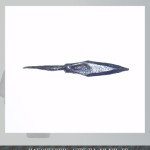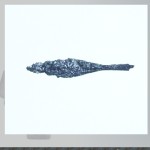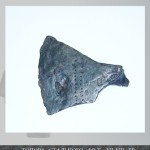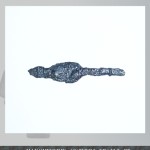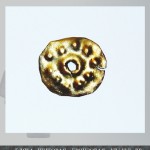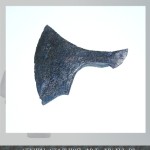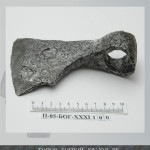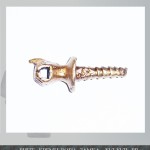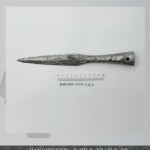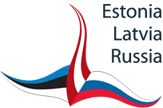Regional settlement history
The Peipsi lakeshore and the River Velikaya watershed had its first settlements appearing already during the Neolithic age. Researches note the confinement of the Neolithic monuments in the region to catchment areas, which testifies to the orientation in the economies of the populaces of the times.
In the early Middle Ages the region was inhabited by Finn-Ugric tribes and Balts. Starting from 5-6th centuries, Slavs spread through the region, and already in 8-9th centuries they dominate in the South-Eastern Pre-Peipus. Via the interactions between the natives and the incomers, a new original ethnicity emerges under the scientific name of Pskovian Krivichi.
In 8-9th centuries the first local fortresses occur to stand for tribal centers. They are mainly placed downstream on the rivers in the Peipsi watershed (Izborsk, Kamno, and Pskov). In late 9th century, the lands are alleged to have belonged to the “Principality of Gostomysl”, and later to Rurik (862 A.D.) In 903, Prince Igor of Rurik Kin weds Olga of Pskov, which is to testify to the special significance of these lands for the State of Russ.
In 1030, Yaroslav (Yuri) the Wise ascertains his authority over Pskov, organizes a march into the South-Eastern Estonia, and founds the town of Yuryev-on-Omovzha (on Emajõgi), thus spreading the power of Russ unto both shores of the Pskov-PeipsiLake. Starting those days, Pskov reigns in the River Velikaya watershed and in the south of Lake Peipus becoming the main stronghold for Russian invasions into the north of the Baltic lands.
Year 1190 hosts the first written mention of warfare by the PeipsiLake »
“Pskovites ousted the seashore Chud’, came in the total of 7 shneks (40-oar boats) and fortified at the lake threshold, and stroke on all non-Pskovite, not letting one escape…” Apparently, this is a narration of an insurgence from North Estonia, and the battle described takes place at the source of the River Narova.
Further on, the political situation becomes less and less favorable for Pskov. In 1202, Bishop Albrecht establishes the Order of the Brothers of the Sword (later on to become the Livonian Order), which becomes a long-time major in the Baltic politics. Already in 1224, the troops of the Livonian Order take Yuryev on Emajõgi the chief navigable through-passage of the region. During the town defense, the Pskovian garrison – headed by Prince Vyachko, who previously was expelled by Germans from Kukenhusen, or Koknese – was fully destroyed. Tatischev wrote that the besieged sent a message to Novgorod urging for help, but received no such aid. All of the captured town defenders were executed. In 1228, the lands of the northern Eesti with Kolyvan’ (or Revel) move under the domain of the DanishKingdom. In the winter of 1234, Prince Yaroslav, son of Vsevolod of Pereyaslavl’ undertakes a march to Yuryev, and deals a crushing defeat to Germans in the battle of Omovzha, pillaging the vicinities of Yuryev and Otepä. The Germans of Yuryev sign a truce with Yaroslav “as he sees fair”. It is probable that at the same time the right of Russian princes to collect the Yuryev tribute was reaffirmed.
However, soon afterwards the Livonian-Pskovian relations improve due to the strengthening of the common enemy – the Duchy of Lithuania. In 1236, the allied forces of Pskov and the Order were defeated near Siauliai, with the Grand Master killed, and “merely one in ten” returning to Pskov of the Russian troops. The defeat near Siauliai brought the Livonian Order to the brink of extinction and led to it joining the Teutonic Order in 1237. This resulted in escalation of German military activities in the Eastern Baltics and in Pre-Peipus in particular. The alliance with Pskov contemplated at the time was terminated, and in 1238 Pskovites – without the Livonian aid – “defeated Lithuania at Kamno through ambush”.
This was the peak of the Order’s successes, granting it access to vast lands in the Velikaya and Peipsi watersheds. The Teutonic Order established control over the trade and strategic communications in the region, thus safeguarding the initial German-Danish colonies in the Baltics from Russian attacks. The Order did not intend to share this new acquisition with anyone, although the official pretender to the Pskov Kingdom was the Bishop of Dörpt. The emergence of a new alien state on the western borders of Russ forces Velikiy Novgorod to seek aid of the Grand Duke. The combined forces are headed by Alexander – Novgorod-summoned son of Yaroslav, the Grand Duke of Vladimir.
The chronicle entry dated 1242 reports: “Alexander and his brother Andrei marched with those of Nizy and Novgorod to banish Germans from Pskov, and … liberated Pskov, and shackled Germans and Chud’ and took them to Novgorod”. These Alexander’s successes caused a large-scale intervention of the Livonian Order into the Russian territory. One force moved towards Izborsk, possibly as a distraction, whereas the main force marched to Novgorod lands, by-passing Pskov. However, at the bridge they ran into the avant-garde troop led by Domash Tverdislavlich, Kerbet and the posadnik’s brother. Meanwhile, Alexander invaded the western Pre-Peipus and retreated on to the ice of the PeipsiLake near Uzmen’, by Crow’s Rock.
The chronicle entry dated April 5 reads: “Germans and Chud’ rode into the troops, and fought through the troops with a boar’s snout, and a great slashing befell on April the 5th, the acathistus Saturday. And God would aid the Prince of Novgorod and Pskovites, and 500 German foot soldiers fell, and 50 surrendered with hands up, and Chud’ ran; and the Prince pursued them on the lake, slashing, for 7 versts up to the shore of Sobilitsy, and many a Chud’ were put to sword – beyond counting, and some of them drowned”. Despite the scale assessment of the Battle on Ice up until now raising academic dispute, it is obvious that the casualties in the Order’s ranks were so great that it lost its strategic initiative for a long period of time afterwards.

Within this period, increasingly more attention is being paid to control over the GreatLake, its docks and fisheries. At this time, the Order gains North Estonia thus becoming the hegemon of the German Baltics. At the same time, its main rival – Pskov the Lord – reaffirms its positions greatly, inciting desire of alliance both among the Grand Dukes of Russ, and in Lithuania. Throughout this period, the Pskov-PeipsiLake is the main traffic artery for the rival states, and the chronicles contain multiple references to Russian and Livonian marches – both in boats and on ice.
Thus, in 1271 “Pagans of Latin faith gathered and came to seize several Pskovite villages in the outskirts, and soon withdrew. God-Loving Prince Daumantas would not tolerate the offence … he chased them in five nasads (sitting sailing boats) with sixty men and, with God’s aid, defeated 8 hundred Germans on the River Miropovna – some putting to sword, and some drowning, and two nasads fled to islands. Prince Daumantas, in the passing, ordered to set the island afire, and then the pagans were running about with the grass burning them, setting alight their hair and clothes; and such was the victory on April 23rd, in the memory of Saint Martyr George, through his aid and prayer”. It is not possible to accurately place the battlefield; however in all probability the mentioned islands are the ones in the mouth of Velikaya.
This is the period when fortified settlements on the shoreline start playing a very specific role, where Pskovites rely on the older fortresses like Mda and Storozhinets, and Livonians are actively building on their shoreline (notably, the first mention of Narva – or Rugodiv – castle dates back to 1321).
Lake skirmishes become particularly active in 1340-1341. Local clashes grow into a full-blown war:
“That winter, Germans came to set up the New Hamlet (Neuhausen) on the River Pivzha in the Pskov Land. In that same time, the Pskovites – given the Germans set town – crossed Narova in a small troop and took the suburbs round Rugodiv”.
“That spring the Pskovites with posadnik Ilia went in their lodyas (60-person sail-and-oar boat) up the River Omovzha, and pillaged German villages to both sides of Omovzha up to the hamlet of Mogilev, and on May 2 they came back to Pskov safe and sound… Foot-soldiers of the young Pskovites marched on to Zanarovye, altogether 50 men under Karp Danilovich the Cripple; meanwhile, Germans crossed Narova, and pillaged the Pskov villages on the shore, and then Karp with his troops met the Germans with Narova’s men and … started … a stern battle, to commemorate the Nativity of John the Baptist, and slaughtered 20 German men he cornered; and the rest of them scattered in shame, leaving all of the spoils and loot; and the Pskovites, having driven them beyond Narova, took all the loot and the very weapons and armor, and returned to Pskov”.
“Volod’sha Stroilovich roused Pskovites to come pillage German villages, in winter and over the ice on the lake, and heard Germans were pillaging village Remda of Pskov, and so Volod’sha and his troops went to Remda village: since the Germans are pillaging the villages, the strike was dealt with no delay, and so that Germans would not have time to do anything, some were stricken down, and those fleeing were captured and brought to Pskov, where they were executed.”
“Germans set up town across Narova from a Pskov harbor; Pskovites commissioned posadnik Ivan and many a Pskovite with him; and they went and threw fire on that town lighting it, and Germans and Chud’ burned, and some were put to sword.”
It is surprising to find in the Pskov chronicles, dated 1380, lines of absolutely equal footing – in one case describing a pan-Russian event, and in the other accounting for lake-based skirmishes: “Grand Duke Dmitry and all the Russian Princes fought Tatars across the Don. The same summer, 24 Pskov lodyas sank (only 4, according to other sources) in Peipus”.
In early 15th century, the situation on the lake remains intense, but as soon as by 1420 both sides realize their need in truce. This is connected to both the strengthening of the Polish-Lithuanian state, dangerous for Livonians and Pskovites alike, and the change in the policy of Muscovy towards the Upper (North-Western) Russ. In 1420 -1421 the peace treaty fixates the border between the Pskov Land and Narva (Rugodiv) along the stem stream (strezhen’) of Narova. Nevertheless, Pskov is actively reinforcing the eastern shore of the Peipsi Lake, and a number of new fortresses are built (Vybor “beyond Rugodiv in Zalesye”, Gdov in the mouth of the River Gdovka, and Kobylye “in the place of dispute above the Great Lake”).
It is no surprise that the period 1459-1462 becomes the time of skirmishes and militant demonstrations from both sides, exploding into a war. With incredulous naivety bordering on hypocrisy, the chronicler reports on a German attack onto “peaceful fishermen”, whose boats – what a coincidence! – happened to be equipped with cannons: “Germans came in oar-boats and under sails and into Narova, and they robbed Pskovite fishermen of their nasad, with cannons and all the battle supplies; and 40 and two yards they burned, and only God saved the people”.
In 1463 the Pskov-PeipsiLake yet again becomes the main battle ground »

“Same winter, on the Great Lent, on March 21, day of Jacob the Confessor, Monday, and at one o’clock in the daytime, German army came to Neuhausen, thinking evil, and heavily armed; and they started to fire their cannons at the town. And another German troop started to pillage and burn Pskovite harbors. And the next day, Pskovites came. And on seeing the Pskovite forces, Germans fled from the town, leaving all of their supplies.”
“In a week, the same month and on day 27, at one o’clock, a week before the Holy Week, Germans came and burned down two big harbors – Ostrovtsy and Podoleshye… Pskovites and suburbanites came to town, but found no Germans and thus went back to their land. Then Pskovite posadniks and Pskovites started thinking where to go find the Germans, and decided to go to the Crow’s Rock, and the entire Pskov army went out on the lake…
And a Chud’ well-wisher came from abroad and told Pskov posadniks that the Germans readied their force, and that they want to strike that night on the isle of Kolpina. And the Pskovites returned the same night and came to Kolpina… And they stroke against Germans at Kolpina… and Germans ran on March 31 with nothing…
At Veche, the Pskovites appointed Dorofey Olferyevich the warlord, and sent him with those willing, and Pskovite men in nasads to pillage German lands. Foreigners humbly asked Pskovites to be taken on to the nasads too, and Pskovites let them on… And they went out in nasads, and some in lodyas. There was the total of 20 uskuyas (oar-boats) and 80 lodyas – all of them with men. And they went to the German land and pillaged much, and they burned out half of the Kerzhel (Kerveli – a region in the upper streams of the River Voo, right tributary to Emajõgi)…
…A week after that time Germans came in oar-boats and lodyas, and stroke at Narovians in Skamya. And Narovians fought back, and 8 men of ours were captured, and Judge of Odonye Sidor was slashed down, but he put up a big fight.
…And Gdovians sent a messenger to Pskov, to say the Germans were pillaging our land, and Pskovites would go there.”
The fragile truce did not last long, and in 1480 a new war broke out, with its paths crisscrossing the Pskov-PeipsiLake.
“The entire Pskovite force went from Izborsk and gathered together in Trastno by the Day of the Holy Savior, and from there they all went to the Great Lake to a German tower; and they besieged it fast and took it, and captured there many goods, cannons and shells; and Germans surrendered, seeing their infirmity, and women and children, all 50 and 2; and Pskovites burned the German tower with fire; and then they went and came to the German town of Yuryev, and stood there a night and a day, and stood at the tower 3 days and 3 nights. And 52 captive Germans were brought by.
… Germans went by the lake, pillaging and burning the Pskov Volost’, and in Pskov people saw smoke and fire. … And soon Pskovites burned Zavelichye themselves, and set outposts via Velikaya in Vybuty and Ustye.
…Same winter, on March 1, the day of Saint Eudokia they approached each other at the estuary of the Pechki Lake, and Pskovites attacked off-guard and from the back – a patrol party against a patrol party, but the main troops of Germans and Pskovites both withstood. Germans saw from their shore that a large Pskov army was nearing the lake, and remained stationed. And Pskovites turned round and went to Pskov, and the Germans retreated too.
…Same winter, Germans came as a large army to the town of Gdov; and they started to shoot fire arrows at the town, and it was very hard on the town; and the volosts around were all burned down; and then they went away, and the town was delivered by God and Saint Dmitry.
… Same winter, Germans came in secret and started to burn harbors, and they came to Kobylye town, and started to shoot cannons at it, and many people rushed over the wall. And the pagan Germans stoned them, and slaughtered them with javelins and swords, and they took the town, and captured the House of – Archangels Michael and Gabriel, and burned the town down, and the church and countless people – both men and women and infants; as friends said 4000 short of 15 were murdered, and some taken away.”
In the course of this war Pskov is besieged yet another time. Part of Livonians – namely “Germans of Yuryev” approached Pskov by the lake: “and the next day men of Yuryev came in 13 row-boats, and set camp out on St. Stephan’s Meadow” (St. Stephan’s Meadow is a low-lying flood shore under the Snetogorsky Monastery).
1503 became the year of another peace treaty, for the duration of ten years »

This treaty specifically focused on disputes around the PeipsiLake: “No one enters foreign land or water from either side; those who would should die. On the Great Lake, Pskovites should fish by their shore, and Pskovites should not cross the Great Lake to the German side for fishing; and should by accident or incapability a Pskovite be towed by water to the German side – that should not cause anger. So is for Germans – they should fish on their shore of the Great Lake, and Germans should not cross the Great Lake to the Pskov side for fishing; and should by accident or incapability a German be towed by water to the Pskov side – that should not cause anger either”.
After 1510, Pskov loses its independence, and the main contenders in the struggle for the control over Lake Peipus become the Great Duchy of Muscovy (later Tsardom) and the Livonian Order. The latter is practically incapable to withstand its powerful neighbor any longer, and through the course of the Livonian War the entire catchment area of the Pskov-PeipsiLake becomes an internal part of the RussianState. However, the defeat of the Russian army in that war restores the former borders.
The Pskov-PeipsiLake played a special role in 1581-1582, during the siege of Pskov by the army of István Báthory. The TalabIslands did not merely become the refuge for the townsfolk (the Poles were incapable of actively fighting Russians on the float), but also the base to form troops to support the besieged. In narratives by the participants of the siege multiple attempts of Russians to break through into the fortress are mentioned.
In 1590, when the struggle with Swedes over the northern Livonia began, the Narova catchment became the main military scene. Then the ice on the lake was used by Pskovites to send cannon supplies to the besieged Narva and Ivangorod.
The Russian-Swedish war of 1656-1657 »

During the Russian-Swedish war of 1656-1657, the northern deployment of the Russian army, acting against Yuryev of Livonia, was receiving supplies from Pskov by water. In September 1657, General Magnus De la Gardie besieged Gdov, but he was defeated upon the River Cherma by the Russian support force headed by warlord Ivan Khovansky. The Swedes fled having drowned their cannons in the PeipsiLake. The Russian Cavalry was chasing them for 15 kilometers.
The Northern War of 1700-1720 having begun with the siege of Narva continued with military operations across Pre-Peipus, where the Russians dealt significant damage to the Swedes. Soon, the Russian Lake Flotilla gained control over the lakeshores and river banks of the Pskov-Peipsi watershed, which led to the capture of Narva, Dörpt (a.k.a. Yuryev of Livonia and Tartu), and in the final run – to the conquest of Estland and Livland. By 1704, the lake becomes an internal water body of the Russian Empire, and remains so until 1918, when the Russian Empire ceases to exist. In 1920, the division of the lake is affixed between the newly formed RSFSR and the EstonianRepublic according to the Tartu Peace Treaty, and starting 1940 – with Estonia annexed by the USSR – the Pskov-PeipsiLake yet again becomes internal. Following the collapse of the Soviet Union in 1991, the newly established state border again crosses the lake; at present, 56% of the aquatorium belongs to Russia, and 44% to Estonia.





